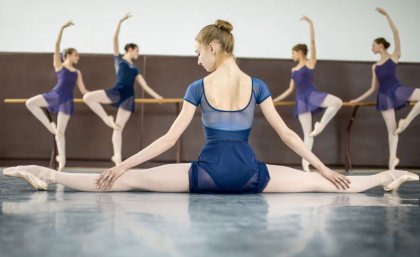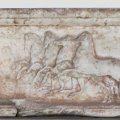
Prima ballerinas Anna Pavlova and Margot Fonteyn reported entering altered states of consciousness and having “spiritual” experiences during performance, a University of Queensland researcher says.
Master of Arts (Studies in Religion) graduate Lynda Flower said her research aimed to gain an in-depth understanding of “peak performance lived experiences” and the meaning people made of them.
“Greater understanding is increasingly important with the current trend of applying knowledge gained about peak performance – particularly in sport – to other high-performance areas such as the legal profession, business, education, medicine and the military,” Ms Flower said.
“Although there is a considerable amount of research into ‘peak performance lived experiences’, there is a distinct lack of clarity surrounding frequently used terms and the spiritual aspect.
“Terms such as mystical, spiritual and peak experiences, ‘in the zone’ and ‘states of flow’ are used interchangeably in literature, but participants have rarely been asked about their spiritual understanding of these experiences.”
Ms Flower interviewed seven former professional ballet dancers for her research.
“I chose ballet dancers as my focus because, with their strict training regimes, dancers are regarded as elite athletes – but they are also performing artists.
“What I wanted to find out is whether they had spiritual experiences during moments of peak performance and if so, what they made of them and how they interpreted them.
“I was fascinated to find in my preliminary research that many renowned ballet dancers – including Vaslav Nijinsky, Anna Pavlova and Margot Fonteyn – all reported experiencing spiritual states of consciousness during performance.
“Margot Fonteyn said that when she danced to the best of her ability, her soul was released and her spirit could shine forth.”
Ms Flower said the study confirmed previous research and all the ballerinas she interviewed said the experience was extraordinary, “that is, it was different from the ordinary and the everyday”.
“They all said that when they reach such a high state, it continued in a post-performance high,” Ms Flower said.
“They felt it for hours afterwards, some even felt it for days. Being so uplifted during performance – it lasted for quite some time afterwards.
“They also all described the experience as spiritual. For some it was a religious spiritual experience, for others it was a more general spiritual experience – but certainly spiritual was the word they used and what they confirmed.”
Ms Flower said as well as adding to the current body of research, she hoped that more in-depth knowledge about the spiritual component of performance would give people a greater understanding of their own personal experiences.
Ms Flower will visit Washington DC this month and the United Kingdom in August to present papers about her research at international studies in religion conferences.
Her study is published in Performance Enhancement and Health.
Contact: Lynda Flower, l.flower@uq.edu.au, +61 7 3346 9865; Fiona Cameron, f.cameron2@uq.edu.au; +61 7 3346 7086.
When performers are in the zone from The University of Queensland on Vimeo.
.jpg)










